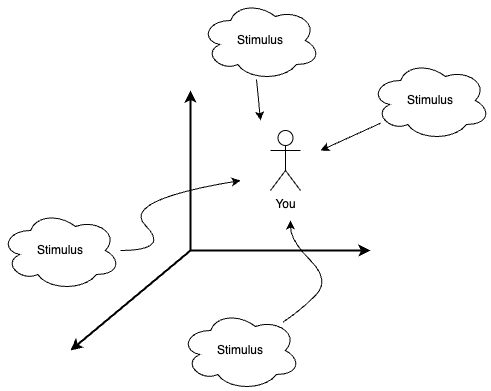Understanding Fear: Embracing It Rather Than Conquering It
Written on
Chapter 1: The Nature of Fear
What makes you anxious?
Fear is an intrinsic part of the human experience. Almost everyone has encountered fear in various forms, whether it's a fear of spiders or the anxiety of losing a loved one. Fears can be categorized depending on their triggers, which can range from life changes to unsettling stimuli that impact our mental and physical states.
To illustrate this concept, consider the following diagram.

Living in a three-dimensional world, we are constantly surrounded by stimuli. Our brains process this information through our senses. Each change in our environment is perceived by our senses, and how we interpret this information plays a crucial role in our experience of fear.
Section 1.1: Instinctive vs. Learned Fears
There are two primary types of fear: hardwired and soft-wired. Hardwired fears are instinctual, embedded in our biology for survival. For instance, if you're taking a walk and see a coiled rope, your brain may automatically interpret it as a snake, triggering a fear response. This reaction is innate and serves to protect us.
In contrast, soft-wired fears are developed through personal experiences and cultural learning. As we grow, we form ideas about what can harm us—be it a childhood encounter with a spider or the emotional pain from a broken relationship. But how do these learned fears affect us?
Subsection 1.1.1: The Balance of Fear

The ideal state lies at the center of the spectrum of fear concepts our brains can comprehend. This "sweet spot" is where our understanding of fear is balanced. Too many fears can overwhelm us and hinder our actions, while an absence of fear can lead to risky behaviors that endanger our well-being.
The sweet spot represents a healthy relationship with fear—enabling us to comprehend it and lead fulfilling lives.